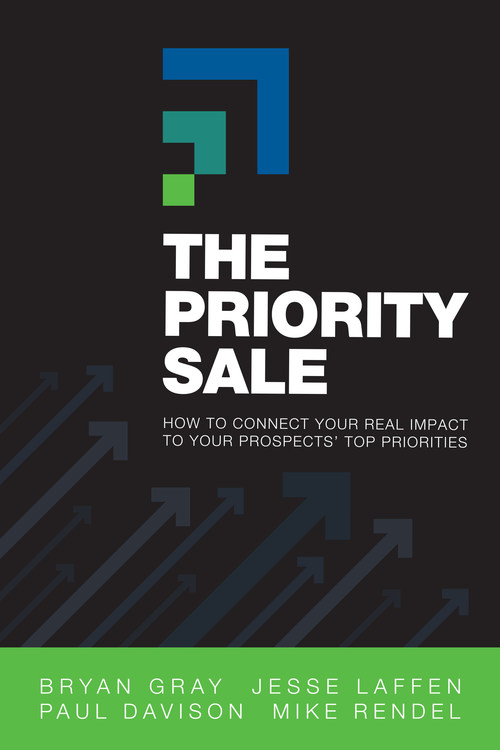INDIANAPOLIS, July 29, 2021 /PRNewswire/ — The average salesperson will lose more sales in their career to a customer’s lack of decision than they will to all their competitors combined.
That’s the insight from sales leadership experts Bryan Gray, Paul Davison, Jesse Laffen, and Mike Rendel, co-authors of the book The Priority Sale: How to Connect Your Real Impact to Your Prospect’s Top Priorities (2021, Indie Books International).
“Most selling teams we encounter today present in the exact opposite way our brain’s decision-making process needs,” explains Gray. “That is why so many sales fail to happen at all. They are not being awarded to you or a competitor, they are being lost to third-party priorities, or doing nothing at all.”
Gray, Davison, Laffen, and Rendel are partners at Revenue Path Group (RPG). They work with sales leaders who are fighting to stay vital and relevant, employing neuroscience-based techniques to develop strategy based on why people buy, more than what they buy.
According to Gray and RPG, one of the crucial steps to closing deals is “winning the brain” by framing solutions and products in ways that speak to the client’s pains and fears.
“To win right now, you must win the brain. To do so, you must employ a specific process, speed, and emotional context,” Gray advises. “If you fail to present information the way your prospects’ brains are wired to receive it, it will result in a much more difficult sale where both buyer and seller experience friction and frustration.”
Capturing the minds of clients requires seizing every opportunity from the first moment. Here are six tips from the Revenue Path Group team on how to make the most of your limited presentation time to engage the client’s brain.
No small talk. The clock is running from the moment you enter the room. No preambles. No first introducing the team. No talking about the weather or something in the news. Engage their minds with questions.
Stand rather than sit. Stand to make your presentation. The presenter who stands commands more attention than the one sitting at eye level.
Arrive early. Perhaps you have heard the adage: Early is on time, on time is late, and late is unacceptable. If this is business you want, show your respect by arriving plenty early. This will also allow the presentation team to not be so anxious.
Build trust fast. With brains quickly scanning if you are to be believed, it is crucial to establish trust as quickly as possible in your presentation or the various brains in the room will move on to other distractions. You build trust fast by understanding your whys.
Use agendas. An agenda helps you set direction, but also gives prospects the opportunity to tell you what they’re thinking. In a good meeting, an agenda will be two-thirds items that you plan to cover, and one-third items that the prospect wants to cover.
Be brain friendly. Study what neuroscience teaches about presentations. Use brain-friendly images. Use brain-friendly messages. Use words that trigger action. Use words that trigger emotions and feelings. More than 90 percent of communication is nonverbal.
The group adds that to make a lasting impression in a client’s brain, it’s important to end the meeting with a bang, not a whimper. Avoid the cliche “are there any questions?” ending, and finish strong.
“Ask what two or three key points stood out,” suggests Gray. “The group will tell you what is important to them. There is power in having them summarize, not you. Then ask what two or three points created or caused confusion. This is vital feedback. The time to correct confusion is at that moment. In teaching, it is called the teachable moment. In presentations, it is the moment you win the brain.”

